
Assessing CloudCath System’s Capability in Peritonitis Detection for in-Home Peritoneal Dialysis
www.physiciansweekly.com
Feb. 3, 2024, 5:27 p.m.
This study delves into the efficacy of the CloudCath system, designed to monitor turbidity in dialysis effluent and promptly alert users to potential peritonitis-related changes. The investigation, a single-arm, open-label, multicenter study, involved 243 participants utilizing the CloudCath system during peritoneal dialysis. System notifications were intentionally deactivated for participants and investigators who adhered to the standard of care for peritonitis signs and symptoms. The study’s effectiveness endpoints focused on assessing the time lapse between CloudCath system notifications and peritonitis events, employing the criteria established by the International Society of Peritoneal Dialysis (ISPD).

Hemodialysis and peritoneal dialysis—health-related quality of life: systematic review plus meta-analysis
spcare.bmj.com
Dec. 16, 2023, 9:29 p.m.
Patients with end-stage renal disease undergoing haemodialysis experience a variety of stressors leading to decreased level of quality of life (QoL). Thus, in this study, we aimed to review the current literature and identify factors affecting the health-related QoL (HRQoL) in these patients.
Share on
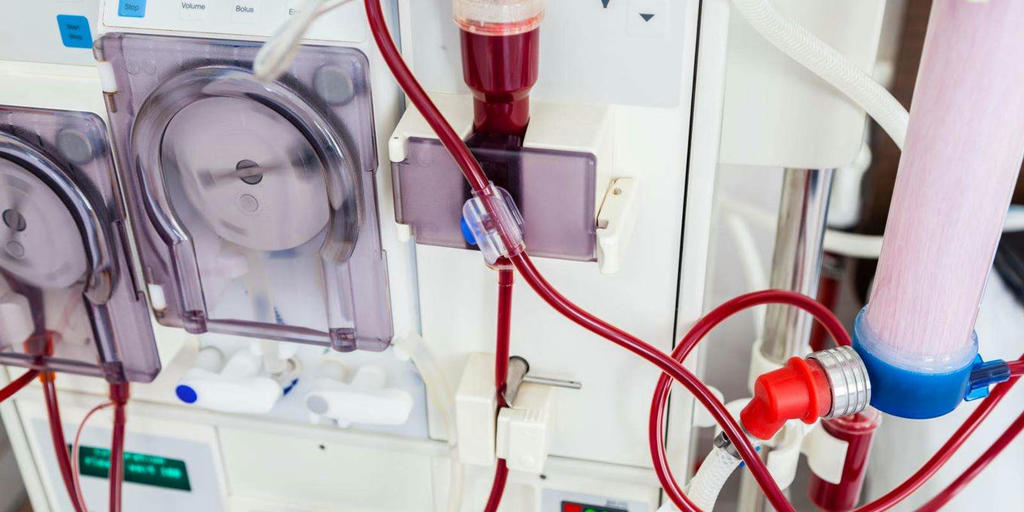
Factors affecting decision of Dialysis types
www.sskidneyhospital.com
Dec. 16, 2023, 9:25 p.m.
Dialysis serves as a substitute for the natural function of the kidneys in individuals with kidney failure. The process involves removing waste and excess fluids from the blood, and maintaining a balance of electrolytes. Top nephrologist in Haryana explains types of dialysis and the factors that are needed to look upon for deciding the type of dialysis one needs. There are following types of dialysis:
Share on
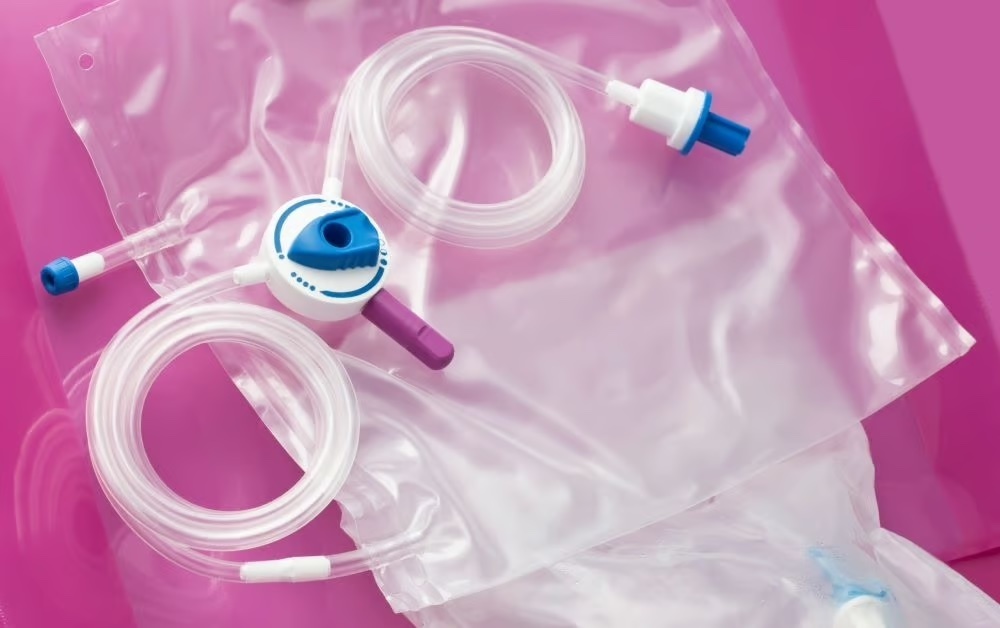
Mean platelet volume and the association with all-cause mortality and cardiovascular mortality among incident peritoneal dialysis patients
bmccardiovascdisord.biomedcentral.com
Dec. 16, 2023, 9:23 p.m.
While mean platelet volume (MPV) is linked to severity and all-cause mortality in patients with sepsis, its association with all-cause mortality and cardiovascular mortality in patients treated with peritoneal dialysis (PD) remains unknown.

Factors Influencing Telehealth Service Use and Health Outcomes in Patients Undergoing Continuous Ambulatory Peritoneal Dialysis
www.jmir.org
Dec. 16, 2023, 9:21 p.m.
Several studies have demonstrated the efficacy and user acceptance of telehealth in managing patients with chronic conditions, including continuous ambulatory peritoneal dialysis (CAPD). However, the rates of telehealth service use in various patient groups have been low and have declined over time, which may affect important health outcomes. Telehealth service use in patients undergoing CAPD has been recognized as a key challenge that needs to be examined further.
Share on

High systemic immune-inflammation index tied to higher mortality with peritoneal dialysis
www.dovepress.com
Sept. 25, 2023, 10:23 a.m.
Elevated SII level was independently associated with increased risks of all-cause and CVD mortalities in patients undergoing PD, especially for those younger than 65-year-old. Application of the SII in clinical practice in predicting mortality for patients undergoing PD requires further multicenter prospective studies.
Share on
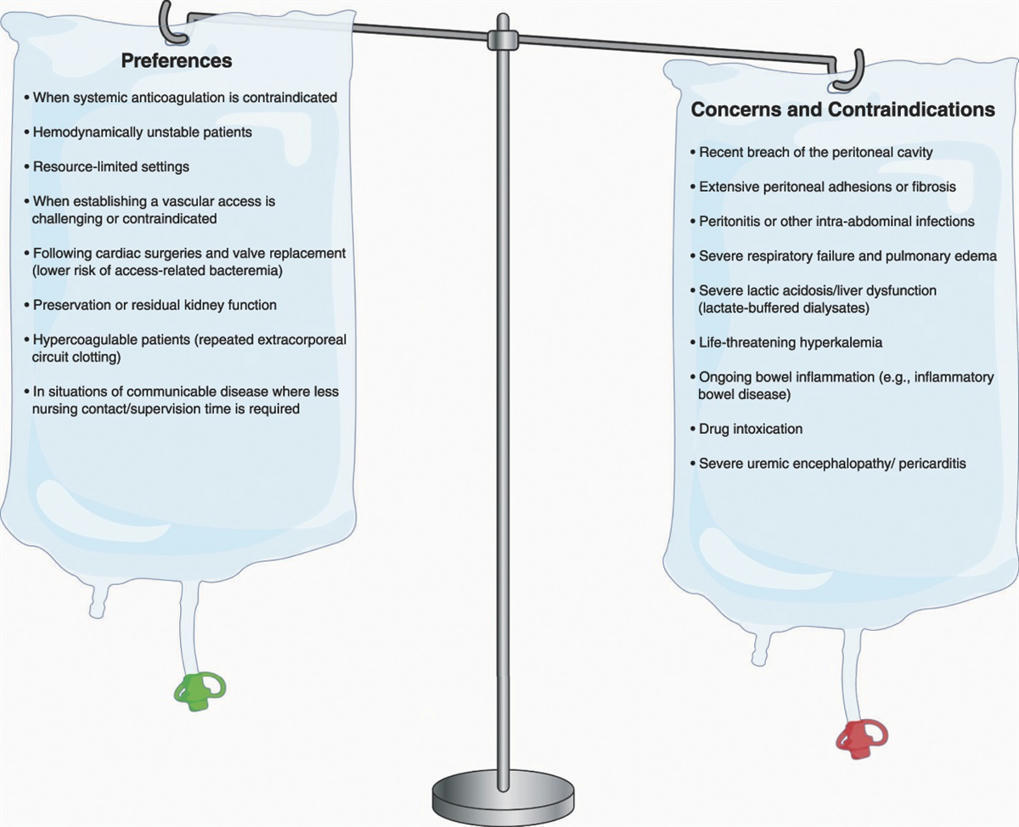
Peritoneal Dialysis in Critically Ill Patients: Time for a Critical Review
journals.lww.com
Sept. 25, 2023, 10:21 a.m.
Peritoneal dialysis (PD) as an AKI treatment in adults was widely accepted in critical care settings well into the 1980s. The advent of extracorporeal continuous KRT led to widespread decline in the use of PD for AKI across high-income countries. The lack of familiarity and comfort with the use of PD in critical care settings has also led to lack of use even among those receiving maintenance PD. Many critical care units reflexively convert patients receiving maintenance PD to alternative dialysis therapies at admission. Renewed interest in the use of PD for AKI therapy has emerged due to its increasing use in low- and middle-income countries.
Share on

Level of Technological Maturity of Telemonitoring Systems Focused on Patients with Chronic Kidney Disease Undergoing Peritoneal Dialysis Treatment
www.mdpi.com
Sept. 18, 2023, 9:49 a.m.
The implementations of telemonitoring systems that reached the highest level of technological maturity correspond to studies developed with the use of proprietary devices and services of international companies specialized in telemedicine treatment of CKD with some limitations regarding their status as proprietary systems incompatible with other devices or systems. Their main limitation is that they are oriented only to treating patients in the APD modality, which limits the care of patients undergoing the CAPD modality. The level of technological maturity is highly relevant for telemonitoring systems. Therefore, this work can serve as a reference point for researchers and technologists focused on developing telemonitoring systems for patients with CKD undergoing PD. Future work will extend to analyzing the level of technological maturity of cyber–physical systems aimed at telemonitoring CKD patients undergoing PD.
Share on

Peritoneal Dialysis Machines - How Do they Work?
www.freseniuskidneycare.com
Sept. 18, 2023, 9:48 a.m.
Peritoneal dialysis (PD) works by using your body’s peritoneal membrane and exchanges of dialysate fluid to filter and clean your blood. You can do your exchanges manually throughout the day or by using a peritoneal dialysis machine—also called a cycler—at night. Doing PD using a machine is called continuous cycling peritoneal dialysis (CCPD) or automated peritoneal dialysis (APD).
Share on
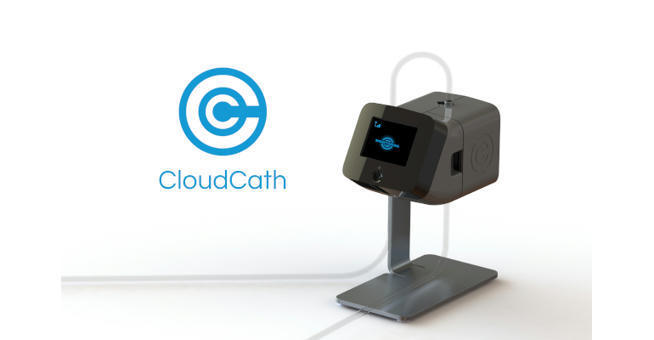
CloudCath Wins FDA Nod for Connected Device for Home Dialysis
www.mddionline.com
Sept. 18, 2023, 9:47 a.m.
Patients with end-stage renal disease (ESRD) who are awaiting transplant are burdened with high-cost care and spending hours in a dialysis center to maintain some functionality in their kidneys. Approval for the CloudCath System may help some patients complete dialysis at home under the watchful eye of clinicians monitoring the device remotely, and at a significantly reduced cost. The company’s first-of-its-kind at-home peritoneal dialysis (PD) system won FDA 510(k) approval and is expected to have a limited launch in 2022, followed by full commercial launch in 2023.
Share on
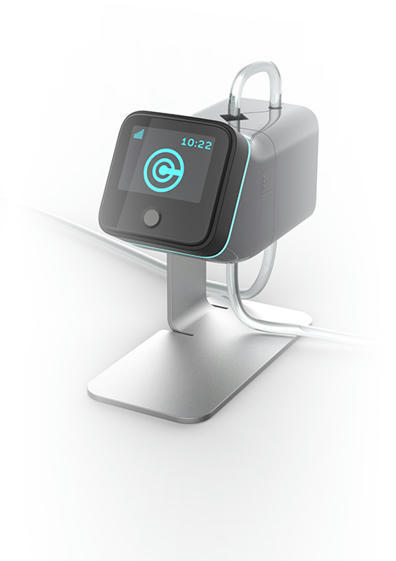
CouldCath: Remote Monitoring for Peritoneal Dialysis
tactical-medicine.com
Sept. 18, 2023, 9:46 a.m.
CloudCath, a medtech company based in San Francisco, has created the CloudCath system, a remote monitoring technology that provides clinicians with data on the spent dialysate fluid of at-home peritoneal dialysis patients. CloudCath is incorporated into the drain line of peritoneal dialysis systems, and wirelessly transmits data to the cloud, with proprietary algorithms then highlighting issues, such as infection, to clinicians.
Share on
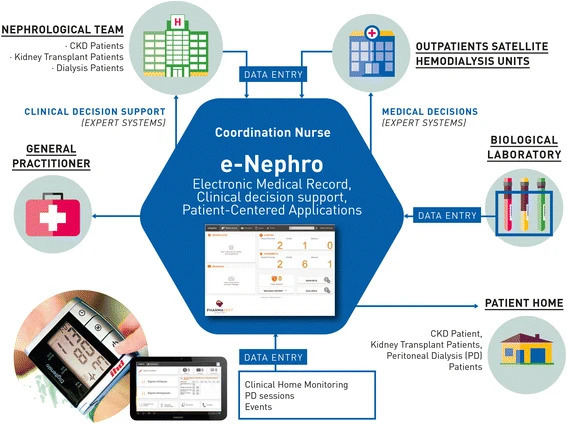
Cost-effectiveness of home telemonitoring in chronic kidney disease patients at different stages by a pragmatic randomized controlled trial (eNephro)
bmcnephrol.biomedcentral.com
Sept. 18, 2023, 9:39 a.m.
Home telemonitoring has developed considerably over recent years in chronic diseases in order to improve communication between healthcare professionals and patients and to promote early detection of deteriorating health status. In the nephrology setting, home telemonitoring has been evaluated in home dialysis patients but data are scarce concerning chronic kidney disease (CKD) patients before and after renal replacement therapy. The eNephro study is designed to assess the cost effectiveness, clinical/biological impact, and patient perception of a home telemonitoring for CKD patients. Our purpose is to present the rationale, design and organisational aspects of this study.
Share on
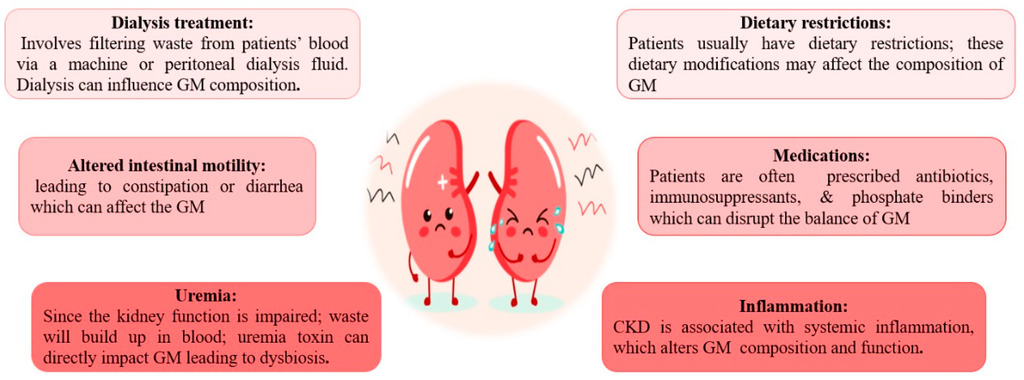
Clinical Perspectives of Gut Microbiota in Patients with Chronic Kidney Disease and End-Stage Kidney Disease: Where Do We Stand?
www.mdpi.com
Sept. 11, 2023, 1:54 p.m.
The gut microbiota (GM) plays a vital role in human health, with increasing evidence linking its imbalance to chronic kidney disease and end-stage kidney disease. Although the exact methods underlying kidney-GM crosstalk are not fully understood, interventions targeting GM were made and lay in three aspects: diagnostic, predictive, and therapeutic interventions. While these interventions show promising results in reducing uremic toxins and inflammation, challenges remain in the form of patient-specific GM variability, potential side effects, and safety concerns. Our understanding of GMs role in kidney disease is still evolving, necessitating further research to elucidate the causal relationship and mechanistic interactions. Personalized interventions focusing on specific GM signatures could enhance patient outcomes. However, comprehensive clinical trials are needed to validate these approaches’ safety, efficacy, and feasibility.
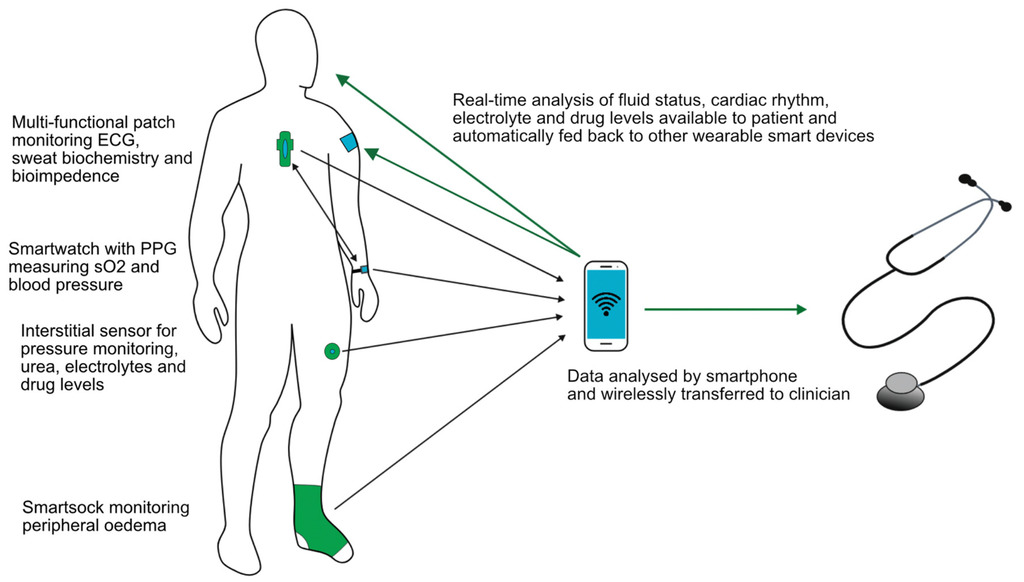
Wearables in Nephrology: Fanciful Gadgetry or Prêt-à-Porter?
www.mdpi.com
Sept. 11, 2023, 1:53 p.m.
Telemedicine and digitalised healthcare have recently seen exponential growth, led, in part, by increasing efforts to improve patient flexibility and autonomy, as well as drivers from financial austerity and concerns over climate change. Nephrology is no exception, and daily innovations are underway to provide digitalised alternatives to current models of healthcare provision. Wearable technology already exists commercially, and advances in nanotechnology and miniaturisation mean interest is also garnering clinically. Here, we outline the current existing wearable technology pertaining to the diagnosis and monitoring of patients with a spectrum of kidney disease, give an overview of wearable dialysis technology, and explore wearables that do not yet exist but would be of great interest. Finally, we discuss challenges and potential pitfalls with utilising wearable technology and the factors associated with successful implementation.
Share on
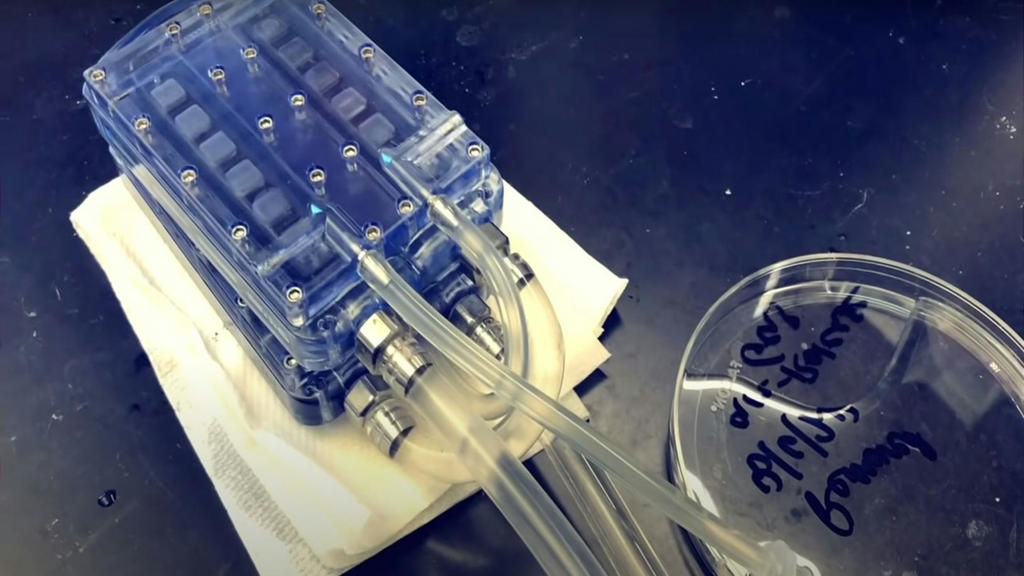
Artificial kidney is a success in pigs, what about humans?
interestingengineering.com
Aug. 30, 2023, 11:40 a.m.
Scientists have developed a pacemaker for kidney patients called the bioreactor. Here is what happened when they tested the bioreactor on pigs.
Share on

Feasibility of an implantable bioreactor for renal cell therapy using silicon nanopore membranes
www.nature.com
Aug. 30, 2023, 4:43 a.m.
We report a proof-of-concept implantable bioreactor containing silicon nanopore membranes to offer a level of immunoprotection to human renal epithelial cells. After implantation into pigs without systemic anticoagulation or immunosuppression therapy for 7 days, we show that cells maintain >90% viability and functionality, with normal or elevated transporter gene expression and vitamin D activation. Despite implantation into a xenograft model, we find that cells exhibit minimal damage, and recipient cytokine levels are not suggestive of hyperacute rejection. These initial data confirm the potential feasibility of an implantable bioreactor for renal cell therapy utilizing silicon nanopore membranes.
Share on
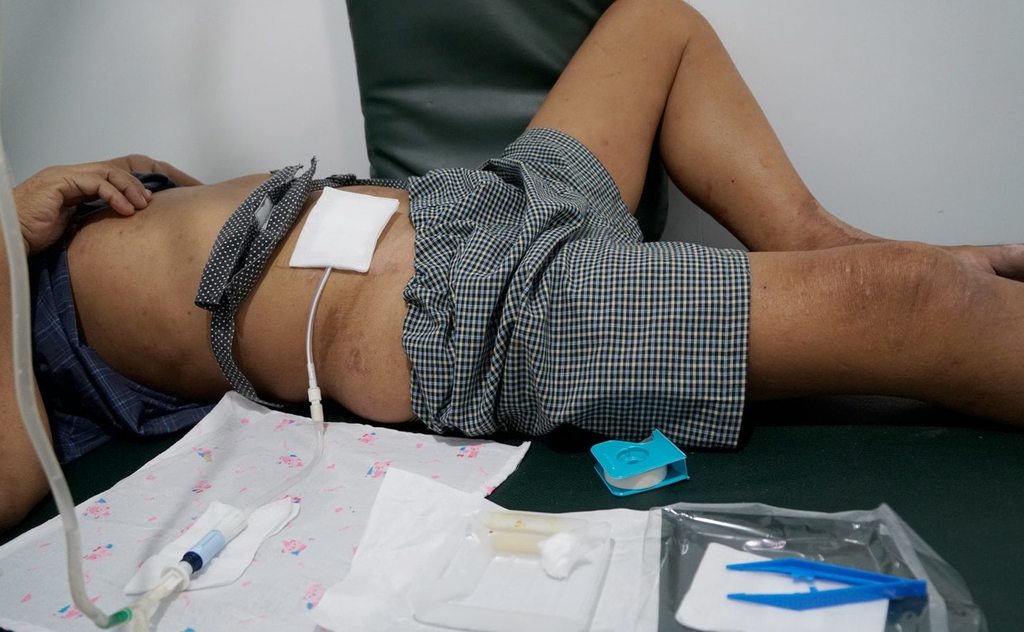
Intérêt des visites à domicile pour le patient traité par dialyse péritonéale
www.em-consulte.com
Aug. 28, 2023, 9 a.m.
La dialyse péritonéale est exclusivement une technique d’épuration extrarénale pratiquée au domicile du patient. Soit le patient est autonome, soit il est assisté par une infirmière libérale ou un membre de son entourage. L’équipe infirmière du centre où est suivi le patient organise des visites à domicile afin de rencontrer ce dernier et son entourage dans leur environnement de vie. Ces visites permettent de faire le point sur le respect des protocoles mais aussi de maintenir le partenariat avec le patient. L’équipe du centre universitaire des maladies rénales de Caen Normandie partage l’expérience de sa pratique en ce domaine des soins.
Share on
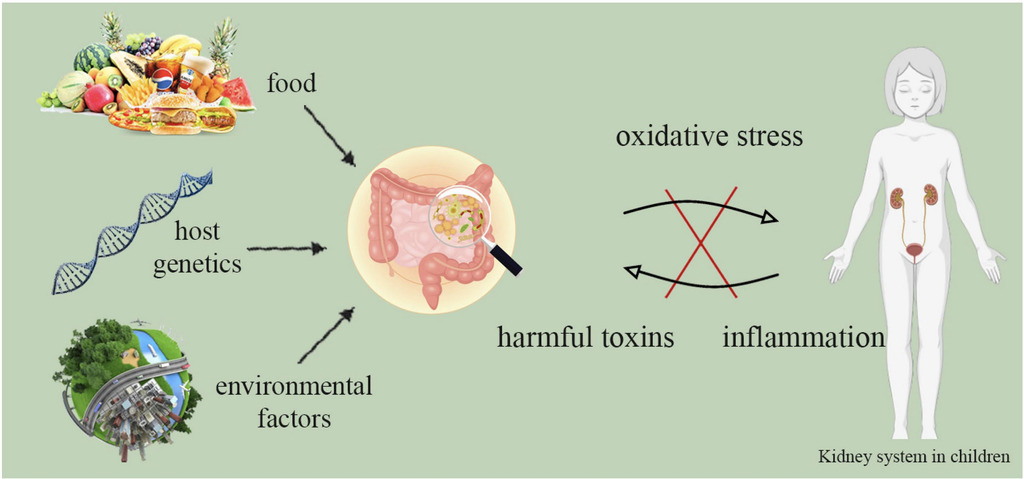
Exploring a Complex Interplay: Kidney–Gut Axis in Pediatric Chronic Kidney Disease
www.mdpi.com
Aug. 28, 2023, 8:45 a.m.
The human intestinal microbiota is a highly intricate structure with a crucial role in promoting health and preventing disease. It consists of diverse microbial communities that inhabit the gut and contribute to essential functions such as food digestion, nutrient synthesis, and immune system development. The composition and function of the gut microbiota are influenced by a variety of factors, including diet, host genetics, and environmental features. In pediatric patients, the gut microbiota is particularly dynamic and vulnerable to disruption from endogenous and exogenous factors. Recent research has focused on understanding the interaction between the gut and kidneys.
Share on

Supplemented Very Low Protein Diet (sVLPD) in Patients with Advanced Chronic Renal Failure
www.mdpi.com
Aug. 17, 2023, 10:41 a.m.
The DNT that we adopted proved to be beneficial in the treatment of CKD stage 5 patients because of the high compliance obtained by making supplementation easier to follow. We only prescribed essential amino acids, reducing the overall tablet intake. According to our experience, the main requirements are a personalized diet and close nephrological and nutritional follow-up. Another interesting observation from the data analyzed is that the benefits would be greater if low-protein diets were prescribed from the early stages of CKD.
Share on

Hospital, Catheter, Peritoneal Dialysis Acquired Infections: Visible Light as a New Solution to Reduce Risk and Incidence
www.cureus.com
Aug. 17, 2023, 10:39 a.m.
Healthcare-associated infections, often identified as hospital-acquired infections (HAIs), are typically not present during patient contact or admission. Healthcare-associated infections cause longer lengths of stay, increasing costs and mortality. HAI occurring in trauma patients increases the risk for length of stay and higher inpatient costs. Many HAIs are preventable.
Share on